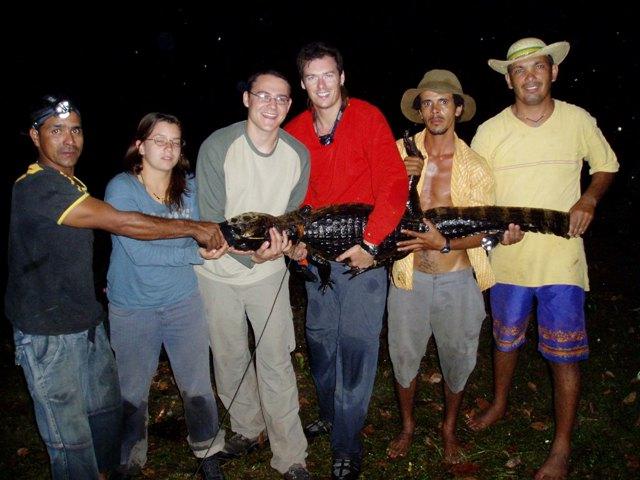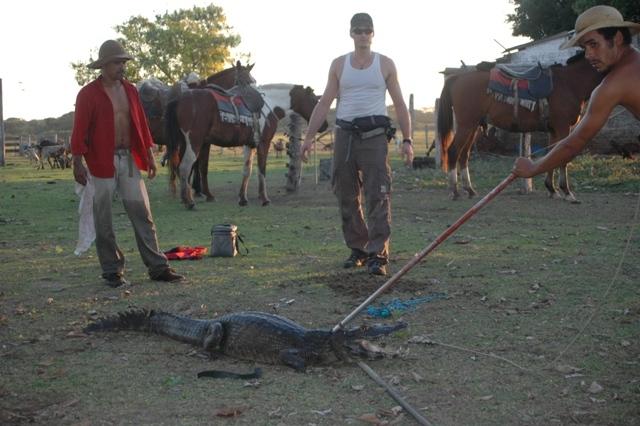Hamish Campbell
Other projects
8 Feb 2007
Using Caiman Yacare as a Sentinel Species to Monitor Environmental Degradation of the Pantanal, Wetlands Brazil I
The Paraguayan Caiman (C. yacare) is an ideal indicator species to monitor how anthropogenic disturbance and toxicants from mining and intensive farming are disrupting the fragile wetland ecosystem of the Pantanal.

Hamish Campbell with 3 local Pantaneros working on the Caiman project.
The Rufford Small Grant Foundation has awarded this project a 2nd small grant to continue this valuable work. Phase I of the project successfully developed and applied sampling methodology to understand the ecology, and identify the health, of a C. yacare sub-population from a pristine habitat in the Nhecolandia region of the Pantanal, Brazil. The next phase of the project is to apply those protocols to a sub-population of C. yacare that inhabits wetland areas and river systems that receive large quantities of agricultural, industrial and urban run off.

Hamish Campbell and 2 Pantaneros tagging a large adult caiman in the field.
Land use changes are occurring with great haste throughout the entire Paraguayan River Basin, and seasonal pastures are being sold off to large conglomerate companies for intensive agriculture. It was a primary goal of this project to assess how these environmental changes were affecting the inhabiting animals of this wetland. However, we did not anticipate that the consequences would be applied so directly to our study animals, and unfortunately, this year we saw the very land on which the study was based sold-off to new owners.
This will prevent future study of the sub-population of C. yacare that were used during Phase 1, and may even see their displacement as land use changes from seasonal pasture to intensive farmland. Although a minor set back, it will not affect the long-term objectives of this project. We have already gained significant knowledge and methodologies through Phase 1, which will be indispensable over the coming year as we branch out to study new sub-populations of C. yacare throughout the Pantanal.